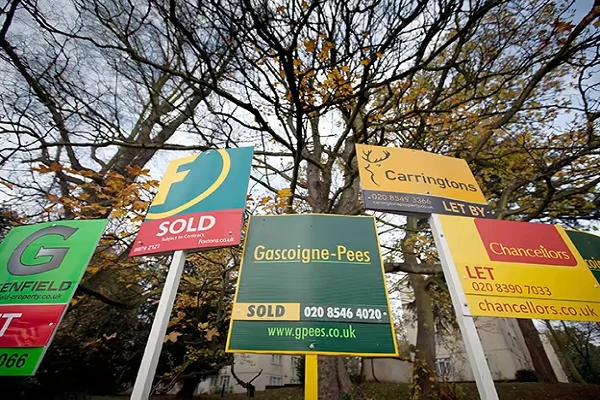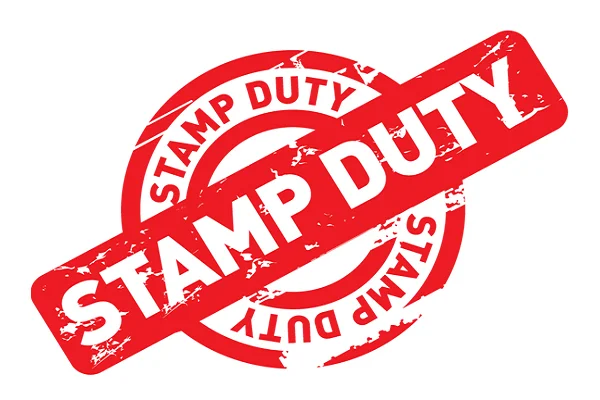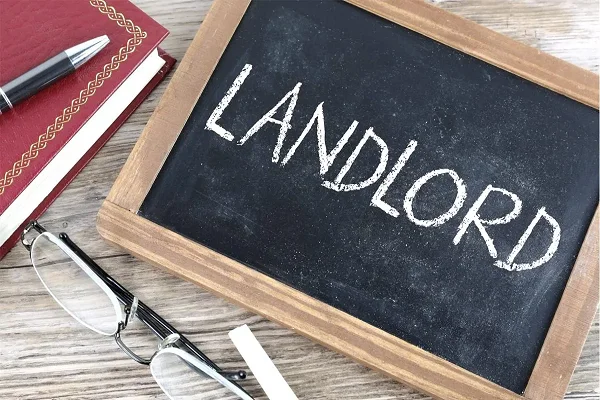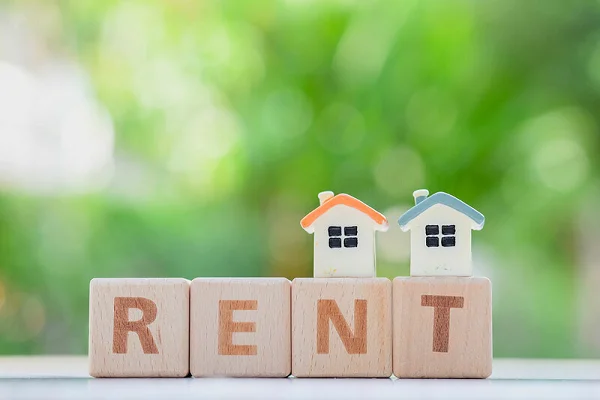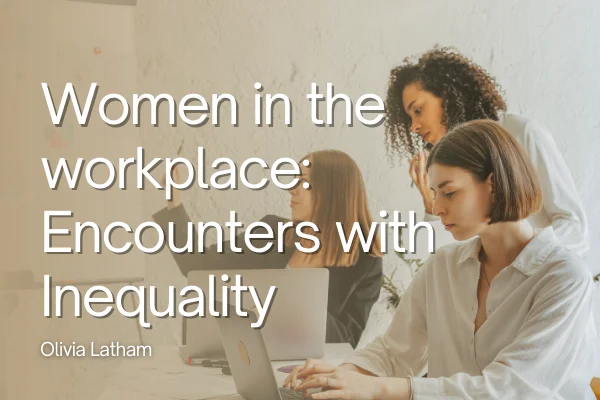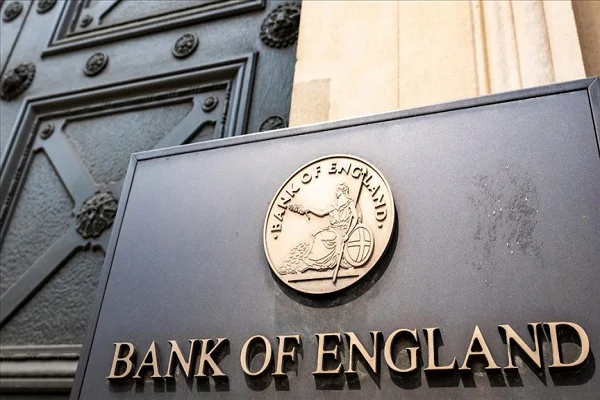Inflation on Property Prices remains at 11.2% but Signs Show an Expected Slow Down in the Property Market
Inflation on property prices remains at 11.2%, but signs show an expected slowdown in the property market.
According to a report by Nationwide, property price inflation is currently stuck in double digits, but it is predicted that we will soon see a slowdown in the market.
The average home price has dropped from a growth of 12.1% in April to 11.2% in May. The current average property price sits at £269,914, equating to an increase of £27,082 from the same time last year.
Nationwide remarked that the property market was faring better than predicted despite the spiralling cost of living and recent mortgage rate increases, but that we should expect to see the rise in home prices slow down in the coming months.
Robert Gardner, Nationwide’s chief economist, said: ‘Despite growing headwinds from the squeeze on household budgets due to high inflation and a steady increase in borrowing costs, the housing market has retained a surprising amount of momentum.
‘Demand is being supported by strong labour market conditions, where the unemployment rate has fallen towards 50-year lows and the number of job vacancies is at a record high.
‘At the same time, the stock of homes on the market has remained low, keeping upward pressure on house prices.
‘We continue to expect the housing market to slow as the year progresses. Household finances are likely to remain under pressure, with inflation set to reach double digits in the coming quarters if global energy prices remain high.
‘Measures of consumer confidence have already fallen towards record lows. Moreover, the Bank of England is widely expected to raise interest rates further, which will also exert a cooling impact on the market if this feeds through to mortgage rates.’
Since the beginning of the pandemic, house prices have seen such a rapid increase that, when compared with the average income, the cost of buying property has never been higher. This impacts affordability and has resulted in many potential buyers being totally priced out of the market.
The ratio of earnings to house prices has increased from a long-term average of 4.5 to an alarming 7 times.
Previously, buyers have been able to take advantage of low-interest rates to buy more expensive homes; however, with the recent interest rates being increased four times in succession by the Bank of England, from 0.1% to 1%, affordability has taken a serious hit.
Over just a year, fixed interest rate deals as low as 1% have risen to just under 2.5% for a similar mortgage. This impacts negatively on the amount buyers are able to borrow, particularly at this time when the cost of living expenses and the energy crisis are already affecting how much people can spend.
Jamie Lennox, director at Norwich-based mortgage broker Dimora Mortgages, said: ‘The tide could be turning as a number of clients who have been house hunting for the past six months are now finally getting offers accepted where, before, they were consistently being outbid by other buyers.
‘A lot of buyers are currently committed to the idea of moving, but once they finally complete, we believe the housing market could start to dramatically change with a lack of new people considering moving.’
Is it Possible to Save on Stamp Duty When Buying a Home?
When the stamp duty holiday came to an end, millions of movers and first-time buyers once again found themselves facing painful levies on already elevated home purchase costs.
In the UK, stamp duty land tax (SDTL) is payable upon the purchase of a home, calculated in accordance with the value of the property.
In England and Northern Ireland, you pay nothing on the first £125,000; 2% between £125,000 and £250,000; 5% between £250,000 and £925,000; 10% on the proportion between £925,000 and £1,500,000; and 12% on anything over £1,500,000.
Different rules apply in Wales and Scotland, but stamp duty is nonetheless payable on most properties.
But what few homebuyers realise is that it is perfectly possible to at least reduce the amount of stamp duty you are liable for. In fact, Shane Mockler, head of new business SDLT at Cap Ex Associates Tax Ltd., said that around 25% of buyers needlessly overpay.
“It’s estimated that one in four transactions overpay due to the various types or property acquisitions that are incentivised by the UK government,” he said, adding that “there are almost 50 reliefs and exemptions available to purchasers of property in the UK.”
First-time buyer exemption
For example, first-time buyers are exempt from stamp duty when purchasing properties valued at £300,000 or less. This translates to tens of thousands of annual property transactions where no stamp duty is payable. First-time buyers purchasing properties valued between £300,000 and £500,000 pay 5% stamp duty, but only on the amount above £300,000 rather than the entire price. This amounts to a potential saving of up to £5,000.
Mixed-use properties
Mixed-use properties and properties with a commercial element can (in some instances) qualify for a partial stamp duty discount, with the maximum rate payable being 5%. This includes properties such as a flat connected with a shop or properties bought alongside forests or farmland. But as all mixed-use properties are unique in terms of both their configuration and their eligibility for stamp duty relief, expert legal representation is usually needed to know where you stand.
Unconventional homes
Certain types of homes considered ‘unconventional’ may qualify for a stamp duty discount or could be considered exempt from stamp duty entirely. For example, homes that do not occupy permanent land space, such as mobile homes, caravans, and houseboats, are exempt from stamp duty, irrespective of their location and value. Elsewhere, properties considered unfit for human habitation at the time of their purchase may qualify for a lower stamp duty band.
Removable fixtures and fittings
Comparatively few homebuyers know that when buying a property, stamp duty does not apply to the “chattels” of the home. “Simply defined, chattels are movable objects that cover things such as carpets, curtains, furniture, ovens, fridges, and other movable objects that are left in the house by the vendor,” explained Mockler. By contrast, fixed furniture and fittings like bathrooms, kitchens, and built-in wardrobes are liable for stamp duty and must be included in the respective calculations.
Has the Day of the Amateur Landlord Come to An End?
Research suggests that more established landlords than ever before are opening limited companies to benefit from tax incentives when purchasing BTL homes and running their private letting businesses. Elsewhere, some polls have indicated that economic pressures on the BTL landlord community are prompting many to consider liquidating their portfolios and exiting the market entirely.
All of this has reinforced the views of some commentators that the day of the ‘amateur’ landlord is coming to an end. But is this really the case?
As with most things, it depends on your definition of an ‘amateur’ landlord. For regulatory purposes, amateur landlords are classified as non-portfolio landlords. This, according to the Prudential Regulatory Authority (PRA), means a landlord with three or fewer BTL properties in their portfolios.
Consequently, an investor managing three BTL properties at the same time and running a successful business would still, in regulatory returns, be referred to as an amateur landlord. Given how the overwhelming majority of BTL landlords in the UK have three or fewer properties under their ownership, referring to this entire community as ‘amateur’ landlords is questionable, if not quite condescending.
A profitable long-term venture
Up and down the UK, sky-high monthly rents are playing directly into the pockets of BTL landlords in most key regions. Unsurprisingly, recent figures published by UK Finance indicate a huge spike in interest in first-time buy-to-let investments among newcomers aged 55 and over last year.
In 2021, there were approximately 17,570 buy-to-let property investors within this age group. This represents an increase of more than 56% from the year before when there were just 11,240 buy-to-let investors aged 55 or over.
This suggests that more people than ever before are looking into the UK’s booming BTL sector. With average property prices only set to continue increasing at a record pace, picking up a property to let out is not going to get any cheaper—something that could explain the ‘now or never’ mantra being adopted by many, who see holding out any longer as a risky decision.
A premature declaration
For a long list of reasons, proclamations regarding the end of the age of the amateur landlord are premature, to say the least. For one thing, the number of people across most age groups looking into BTL investments as first-timers is actually on the rise.
Data published by Zoopla this week indicates an 11% increase in private rental prices during the first three months of 2022, taking the average cost of renting a UK home to £995. All of which adds up to a hugely profitable long-term venture for investors with rental properties in the right places.
In addition, a report published by the London School of Economics on behalf of the National Residential Landlords Association indicated that a full 64% of landlords in the UK have three properties or fewer. 32% of them have one unit, whereas 13% have three properties under their management. Figures that call into question the definition of an ‘amateur’ landlord confirm that the age of the amateur landlord is far from the end.
Private Rental Costs in the UK Hit a New 14-Year High
UK rental prices have skyrocketed to a new 14-year high, achieving the fastest annual growth since the 2008 financial crisis. Coupled with the unprecedented cost of living increases, private tenants across the country are finding it more and more difficult to make ends meet.
Data published by Zoopla this week indicates an 11% increase in private rental prices during the first three months of 2022, taking the average cost of renting a UK home to £995. This equates to an additional £88 per month, compared to average rents at the start of the pandemic.
According to Zoopla, this extraordinary growth is attributed to dwindling availability within the private renting sector and growing demand, pushing average monthly rents higher as inventory runs short.
Since 2016, total average monthly rental growth in the UK has topped 16%. However, UK rents have not kept pace with average wages or consumer price inflation, making it increasingly difficult for private renters to comfortably cover their outgoings. The UK CPI hit a 30-year high of 7% in March.
Significant increase in gross income spend on rent
Skyrocketing rents in key regions across the country have triggered a major spike in the proportion of gross income households are spending on their monthly rent. According to Zoopla, average rent outgoings now account for 37% of the typical single earner’s total income in the UK.
For those renting privately in London, the figure increases further to 52%, the highest level recorded since March 2020.
Over the course of 12 months, it now costs more than £20,000 to rent a typical home in London, according to the latest estimates from Zoopla.
“The tenancy renewal numbers we have seen so far in 2022 are unprecedented,” commented Gareth Atkins, Managing Director, Lettings at Foxtons.
“Steadily increasing demand, severely limited stock, and a swift rise in rental prices are all compelling reasons to renew, and renters are responding.”
A surge in post-pandemic demand
Following two years of fairly stagnant performance, average monthly rents in the capital are once again rising rapidly—up 15% at the end of Q1 this year. As the return to city living gains pace, so too does demand for properties in and around major cities like London.
“The surge of post-pandemic pent-up rental demand will normalise through Q2 and Q3, however, which means rental growth levels will start to ease,” said Gráinne Gilmore, head of research at Zoopla.
“Affordability considerations will also start to put a limit on further rental growth, although this may occur at different times depending on location.”
“Rents are likely to continue rising for longer in areas that have the most constrained stock levels—currently London, Scotland, and the South West.” Zoopla’s report also showed how average tenancy lengths have increased significantly over the past five years, up from 51 weeks in 2017 to 75 weeks.
Women in the Workplace: Encounters With Inequality
Today, let’s talk about the inequality women encounter in the workplace.
Did you know that studies show that in 2022, women in the UK will be paid just 90p for every £1 earned by men?
The results of the government’s latest gender pay gap report are unfortunately unsurprising to me. Among the cost of living crises, it paints a dismal picture of the realities of being a woman in 2022.
Even though companies that are gender and ethnically-diverse outperform their peers, inequality is still present. What’s more, companies with low rates of both gender and racial diversity are 29% more likely to make less money. In other words, it is damaging to a company’s performance if its leadership teams do not have diversity.
Research shows that inclusive teams make better business decisions up to 87% of the time. As you can imagine, teams with less diversity are more likely to make poor choices for the company. Diversity is needed not only for equality and basic human rights but also to succeed! Difference is a blessing, not a curse, and it enables creativity. Every human sees the world uniquely and has different knowledge, perspectives, and points of view.
Being a female entrepreneur is no walk in the park either! Studies show that only 29% of small businesses in the UK are run by women. However the inequality does not stop there; 1 in 3 female entrepreneurs have experienced sexism running their own business, and 91% of female entrepreneurs say gender bias and inequality are common in business. I find this appalling; even setting up a business is not enough to earn equal rights in some people’s eyes. Not that equal rights should have to be earned anyway.
While the Sex Discrimination Act and the Equal Pay Act were established back in 1970, extensive progress towards financial equality has been limited.
Last year, the Institute for Fiscal Studies argued that the gender pay gap has seen “barely any change” over the past 25 years once increases in women’s education are accounted for.
Despite this, I am forever hopeful that one day we will finally achieve wholesome equality. Sheryl Sandberg once said, “In the future, there will be no female leaders. There will just be leaders.” This will be the day when there is no shock factor when a woman is in a position of power. This will be proven on the day that all the above stats sit at 50%.
After reading this, I would like you to think about three things today:
- Have you experienced inequality in your workplace?
- Why are we still experiencing inequality in the workplace?
- How can we change the inequality that is being presented?
Resources:
- https://get.simplybusiness.co.uk/empowering-women-in-business/
- https://www.forbes.com/sites/forbesnonprofitcouncil/2020/03/27/why-gender-equality-matters-in-business-success/?sh=57946f82669c
- https://www.stylist.co.uk/news/gender-pay-gap-2022-report/644838
- https://www.icena.net/gender-inequality-workplace-statistics/#:~:text=Sheryl%20Sandberg%20once%20said%3A%20%E2%80%9CIn,in%20a%20position%20of%20power
20% of Brits Now Use Loans to Buy Gifts for Parties and Events
UK households may be feeling the pinch of unprecedented living cost increases, but it seems even record inflation cannot quell the country’s collective craving for good times. According to the latest data published by Forbes Advisor, around 20% of Brits are now using loans (and other financial products) to buy gifts for important events and celebrations.
According to Forbes, 11% of UK residents have used personal loans to cover the costs of attending and buying gifts for events like birthdays, weddings, and christenings. Similarly, 11% said they had resorted to potentially expensive payday loans to ensure they were able to attend parties and events, while a full 26% said that they put the costs of attending events on their credit cards.
Elsewhere, 12% said that they had borrowed money from family or friends to cover the attendance and gift costs of these ‘life events’ and other important happenings.
Cost of living increases hit hard
With UK inflation at a 30-year high of 5.5%, every UK household is feeling the pinch of unprecedented cost of living increases. As a result, 26% of those surveyed by Forbes said that they have had to spend less on parties and events (attendance and giving gifts) due to rising fuel, energy, and food costs.
Around 13% said they have been rendered unable to buy gifts for such events or attend them in the first place due to ongoing living cost hikes.
Even so, Brits continue to spend surprisingly significant amounts of money on attending important events. According to the Forbes survey, this is how much the average person spends on attending and buying gifts for major life events:
- Family wedding: £235
- Hen/stag party: £199
- Friend’s wedding: £199
- Graduation: £189
- Baby shower: £165
- Engagement party: £159
- Anniversary party: £156
- Naming ceremony: £154
- Adult birthday party: £142
- House-warming: £138
The financial crisis is putting a major strain on relationships, with more than 40% of those surveyed admitting they had fallen out with friends and family members over event attendance and gift costs. In addition, more than 50% said that if it were socially acceptable to do so, they would prefer not to give gifts when attending important events like those above.
“The end of COVID-related restrictions on international travel and guest numbers at events such as weddings, self-isolation, and mask-wearing is a massive breath of fresh air as we head towards a brighter spring and summer of 2022,” commented Laura Howard, personal finance expert at Forbes Advisor.
“Yet, as we come out of one crisis, the weight bears down heavier on another—the soaring cost of living. Of course, this is in no way comparable to the suffering that millions of Ukrainians fleeing their homes as a result of the war are facing right now. But, for those of us on UK soil, it’s the kind of worry that can keep us awake at night.
“Inflation as measured by the Consumer Prices Index (CPI) measured 5.5% in January—a 30-year high—while the figure for February is almost certain to be higher still. And even that figure will not reflect the next hike in energy costs set to whack household budgets in April.
“We have little choice but to power our homes, fill up our cars with fuel, and do the weekly food shop—all costs that have soared since the pandemic began. But for more and more households, this is simply where the money runs out and ‘extras’ such as life celebrations become unaffordable.”
“It’s little surprise then that an increasing number of us are resorting to borrowing to fund these celebrations—in some cases even using payday loans.”
“Cutting back on expenses is no easy feat, especially now when cheap energy deals are no longer available. But it’s worth seeing if there are some unnecessary expenses to tackle.”
Is it time to switch?
Ms Howard went on to highlight the potential savings many households could make by switching to new lenders and financial service providers.
“Are you paying interest on credit card debt, for example, when you could transfer the outstanding amount to a 0% balance transfer deal? Are you free to switch your better mortgage deal or reserve your next one (which you can do between three and six months in advance) before the next likely rise in interest rates?” she said.
“It could simply be that you are paying for services or features that you don’t use, such as on your broadband and TV deal, for example.”
“Any cash that’s being unnecessarily spent is always likely to find a welcome home, such as to fund life events and celebrations this year. But if it’s simply not available, the key is not to buckle under pressure and spend what you don’t have. Being creative and thoughtful with gift-giving can be a remarkably effective substitute that’s also often likely to be remembered for longer.”
Annual House Price Growth Hits a 17-Year High
Record cost-of-living increases continue to have little to no impact on the UK’s collective appetite to get on the property ladder, as demand continues to outpace supply in all areas of the country. According to Nationwide, insatiable demand has propelled annual house price growth to its fastest pace in more than 17 years, an astonishing 14.3% year-on-year growth rate in February.
This is the fastest annual growth the market has recorded since November 2004, even as the UK faces unprecedented inflation and an escalating cost-of-living crisis.
The figures from Nationwide indicate that the average asking price for a UK home increased by around £33,000 over the past year alone. It now costs £265,312 to buy a home in the UK, making the prospect of homeownership increasingly less plausible for an entire generation of would-be homebuyers.
Nationwide commented that the sector had demonstrated “a surprising amount of momentum given the mounting pressure on household budgets and the steady rise in borrowing costs”.
House prices are up 20% in two years
Three consecutive interest rate hikes and record-high energy costs are doing little to dampen house price acceleration across the UK. Average house prices are now more than 20% higher than they were at the beginning of 2020 before the pandemic plunged the country into lockdown.
Once again, London recorded the lowest average house price growth at just 7%, though it remains home to the UK’s highest average prices by a considerable margin.
“A combination of robust demand and a limited stock of homes on the market has kept upward pressure on prices,” said Nationwide’s chief economist, Robert Gardner.
Demand for homes is being sustained by the current strength of the UK job market, along with the extent to which many first-time buyers used lockdown to save towards deposits on their first homes.
An Inevitable slowdown to follow?
For the most part, analysts have written off the prospect of a housing bubble entirely. However, market watchers believe that a gradual slowdown in average house prices is inevitable and will creep into the equation towards the end of the year.
The Office for Budget Responsibility, for example, predicted that house prices would fall in 2022. As living standards continue to plummet in the face of unprecedented living costs, many would-be buyers may be forced to rethink or delay their property purchases while struggling to make ends meet.
Speaking on behalf of Pantheon Macroeconomics, senior UK economist Gabriella Dickens said that while March had brought little other than record-breaking performance for the housing sector, it would also most likely represent the “peak for house price growth” this year.
“For starters, mortgage rates look set to rise further in the coming months,” she said.
“In addition, we expect housing demand to be hit by a sharp drop in households’ real disposable incomes.”
Bank of England Announces Yet Another Hike in Interest Rates as Cost of Living Crisis Escalates
On Thursday this week (5 May), the Bank of England is expected to once again increase interest rates as the cost of living and inflation rates spiral out of control. The Bank of England is doing this in an attempt to stabilise the constantly increasing inflation rate. This rise will see a thirteen-year high in interest rates.
Rates are predicted to rise from the current rate of 0.75% to 1%, the highest seen since 2009. Due to the ongoing war in Ukraine, inflation is expected to continue to rocket with the rise in the cost of living, making it very difficult for many to deal with crippling financial responsibilities.
Members of the MPC (Monetary Policy Committee) have previously raised interest rates during the last three meetings in order to try and get inflation under control. Inflation currently sits at a 30-year high with a 7% inflation rate by the end of March, a far cry from the 2% target set by the Bank of England.
Things are expected to go from bad to worse with the predicted energy price cap revision due to be increased again later in the year. There is also a warning that inflation may, at the same time, rise to a worrying 9%, with some experts believing that it could actually reach double figures.
By raising interest rates when prices are increasing faster than wages, the Bank of England hopes that people are encouraged to save as opposed to borrowing. This tends to slow down the economy and, in turn, help bring down inflation rates.
With businesses and households being forced to tighten up on their finances, the growth of the UK economy is likely to suffer with the expectation that the Bank of England will further trim the economy on Thursday, according to the experts.
Investec economists said: “The UK is in the grip of the cost-of-living crisis. Coupled with tax rises, this leaves a rocky road ahead.”
The expectation from the experts at Investec is that we will be able to avoid a full-on recession. This is primarily due to many being able to save during the COVID-19 pandemic, but spiralling inflation and slow economic growth “leave the MPC in a bind”.
Investec has stated that they are predicting another hike in August from 1% to 1.25% but expect a pause after “assessing how big the effect of the real income squeeze on activity turns out”. More increases in 2023 are a very real possibility, with two more rises expected to be implemented.
February saw a sharp decrease in growth as the cost of living crisis really took hold. Official data released revealed that in February there was growth of just 0.1%, down from 0.8% seen the month before.
The Bank of England stated that it thought this year’s first quarter growth would sit at around 0.75%, which is higher than the expected GDP (gross domestic product), which was expected to remain flat.
Many experts, however, are predicting a flatlining of the GDP in quarter 2, as escalating prices further decrease consumer confidence.

